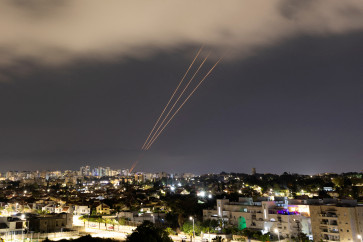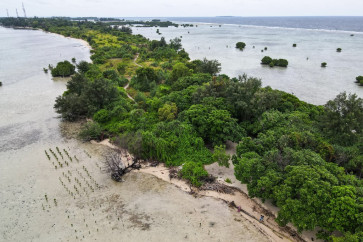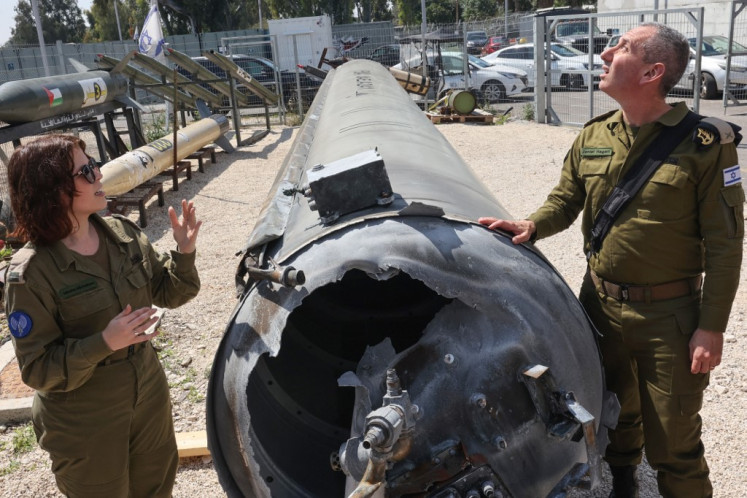The new soul of Kota Tua
Despite its decaying buildings, smelly canals and lack of points of interest, Kota Tua (Old Town) in the north part of Jakarta has never been entirely abandoned
Change Size

D
espite its decaying buildings, smelly canals and lack of points of interest, Kota Tua (Old Town) in the north part of Jakarta has never been entirely abandoned. People who frequent the area certainly are not there to tap knowledge of history, which they can obtain in museums.
Instead, they take photographs, bike, explore the neighborhood, sit around and chat and even play chess in open spaces. They are there to enjoy informal and spontaneous activities.
In a city saturated with privatization, Kota Tua is one of the few remaining open spaces in Jakarta, a true public space, where people are free to express themselves without the social pressure of having to dress or act a certain way.
In its ordinariness, it is stripped of sheer consumerism. In its forgotten spaces, there is exchange, participation and dynamic dynamism that is inclusive. This social space is the soul of Kota Tua.
One of the missions of the Kota Tua revitalization is to encourage a sense of belonging and love in the city. To achieve this, a thoughtful restoration is needed not only of its physical spaces, but also of its intangible social spaces ' where the abovementioned quality should thrive ' because a sense of belonging to the city comes only from frequent engagement with specific activities in specific places in that city.
Yet with the lack of facilities and relatively long physical reconstruction period that follows the master plan, how can Kota Tua be woven into the regularities of its citizens' lives? According to Donald Getz, professor emeritus at the University of Calgary and a leading scholar in tourism and event studies, public festivals have long been used as a means of revitalizing the economy, infrastructure and the image of a city.
Festivals, which can be realized in a short period of time with minimum facilities due to its temporality, could be the most effective way to revitalize the social space in Kota Tua. Take Venice in Italy as an example. It is a historic city and Europe's largest car-free urban area. Tourists come for its architectural-urban spatial quality, and mostly the festivals. In the 1980s, The Carnival of Venice was revived and the city has become a major center of international conferences and festivals since then.
Venice hosts three of the world's most prestigious festivals: The Venice Art Biennale, The Venice Architecture Biennale and the Venice Film Festival where all the world's greatest artists, architects and filmmakers celebrate against a backdrop of elegantly decaying historical buildings and canals.
Jonker Walk, a popular tourist area in Malacca, Malaysia, began holding regular weekend festivals initiated by the Malaysian government. Soon, it became a new tradition. Even though urban critics point out that Jonker Walk has become overly touristic and overcommercialized, it has achieved several points in preservation with a new spirit.
Kota Tua can enjoy a revival by holding great festivals that can build on one another to create a continuous narrative in Kota Tua, perhaps one about Kota Tua as a district that encompasses art and creative industries, finance, cuisine, commerce, culture and education, as envisioned in the Jakarta Old Town Revitalization Corporation's (JOTRC) plan. The festivals can be a platform where ideas disseminate and materialize. They can, and should, take place in public spaces, where maximum diversity and dynamics are found.
Heritage buildings and museums should be open and host different exciting programs for each different festival. Abandoned buildings can be utilized for uncommon, creative programs that can make use of the indoor and outdoor spaces. Everyone who appreciates creativity will be able to join.
It is through these festivals that physical and social spaces continually renew one another and provide Kota Tua with a vibrant, new soul. Therefore, continuous creative public events, provided they are tastefully curated, can fill up Kota Tua all year long.
After all, permanence is a collection of temporalities.
The events come and go, but if seen in a year ' if Kota Tua is fully booked with good events for 52 weeks ' then it will be actually revived, re-souled, revitalized and we do not have to wait for a generation to enjoy Kota Tua.
Diana Ang, a graduate of Rice University in the US, is an architect at the Office for Metropolitan Architecture (OMA) in Hong Kong. Daliana Suryawinata is founding partner of SHAU Architecture & Urbanism in Rotterdam and Jakarta and chair of Indonesian Institute of Architects (IAI) European Union chapter.








![A man walks across a pedestrian crossing near a billboard depicting named Iranian ballistic missiles in service, with text in Arabic reading “the honest [person's] promise“ and in Persian “Israel is weaker than a spider's web“, in Valiasr Square in central Tehran on April 15, 2024. Iran on April 14 urged Israel not to retaliate militarily to an unprecedented attack overnight, which Tehran presented as a justified response to a deadly strike on its consulate building in Damascus.](https://img.jakpost.net/c/2024/04/16/2024_04_16_149344_1713260233._medium.jpg)
